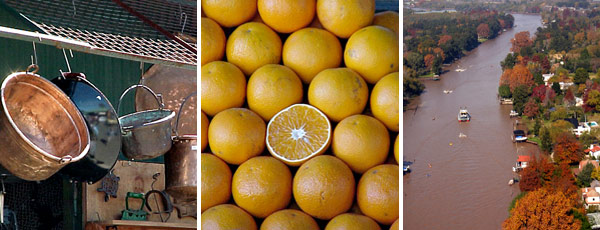There are only 32 km between
Tigre and the Obelisc. This spot in the North of the
Province of Buenos Aires is undoubtedly a piece of living history.
Colonization started here with the second foundation of
Buenos Aires by Don Juan de Garay. A document dated 24th October, 1580 records the distribution of the land.
The name
Tigre is derived from an old story of jaguar hunters. It is said that a couple of very famous and virtuous hunters used to live in the region.
With the vertiginous passing of time, these lands were populated by farmers who lived with their families upon the products they grew and harvested. In 1611, the Cabildo asked the for a report on land farming and appointed 15 farmers residing in the area to cultivate wheat, thus giving origin to the village, which grew and became established both socially and economically.
Today, the City of Tigre is a destination neither foreigners nor local people should miss.
But beyond all activities, its main attraction is the
Fruit Market, a different, almost magical world.
The port has three inner docks. Daily
catamaran excursions leave from one of them to the Delta.
The central docks concentrate the grocer’s boats, which supply the inhabitants of the islands with the most varied products.
In the last harbour, the timbering boats full of poplar and willow logs from the forested islands of the Delta are unloaded.
The port of Tigre lodges the open market with streets full of the colors of rustic fabric, furniture and accesories made in cane and willow, delicious jams and honey, brilliant flowers, and of course, all the variety of native fruit co-existing in absolute harmony in Tigre.

